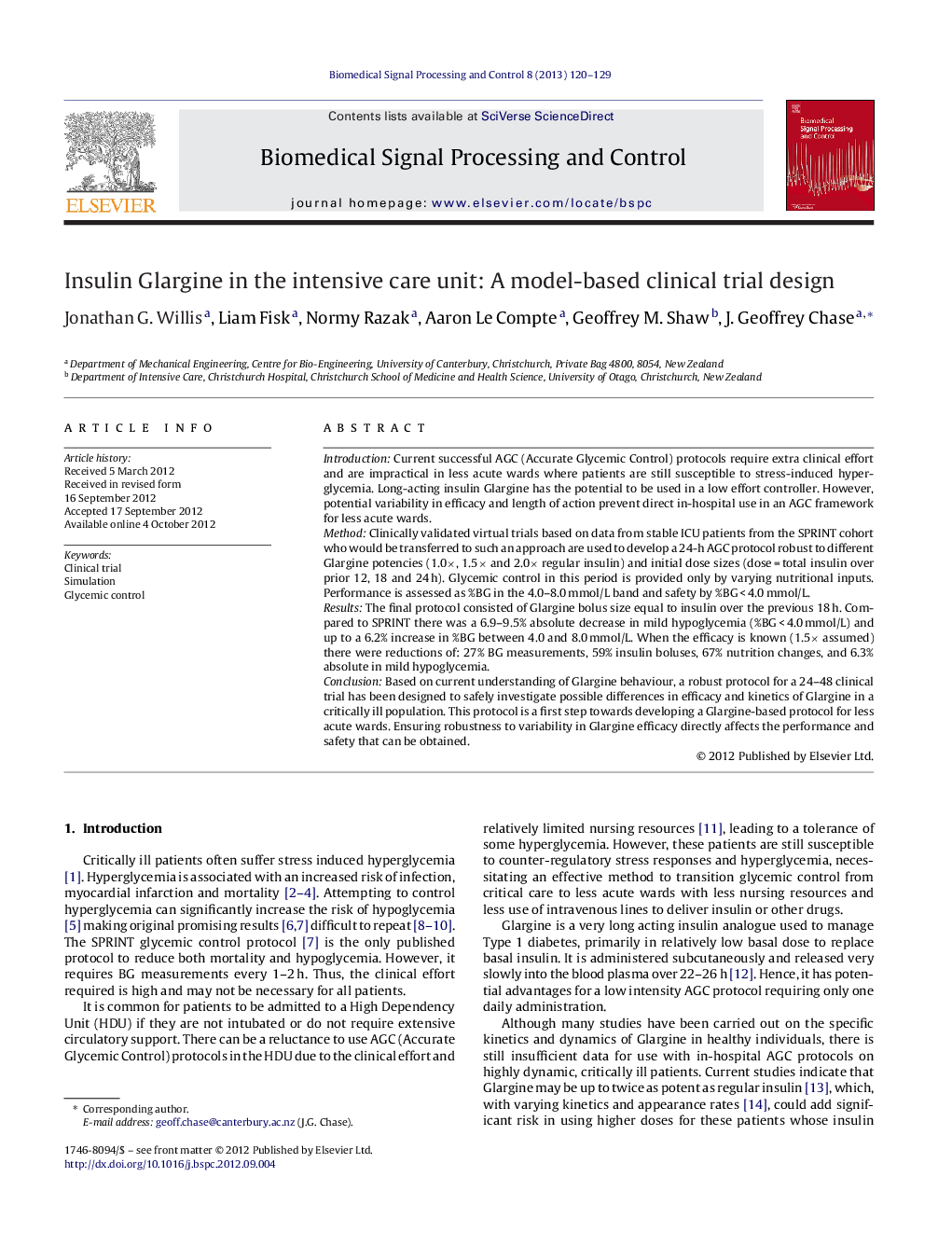| Article ID | Journal | Published Year | Pages | File Type |
|---|---|---|---|---|
| 558150 | Biomedical Signal Processing and Control | 2013 | 10 Pages |
IntroductionCurrent successful AGC (Accurate Glycemic Control) protocols require extra clinical effort and are impractical in less acute wards where patients are still susceptible to stress-induced hyperglycemia. Long-acting insulin Glargine has the potential to be used in a low effort controller. However, potential variability in efficacy and length of action prevent direct in-hospital use in an AGC framework for less acute wards.MethodClinically validated virtual trials based on data from stable ICU patients from the SPRINT cohort who would be transferred to such an approach are used to develop a 24-h AGC protocol robust to different Glargine potencies (1.0×, 1.5× and 2.0× regular insulin) and initial dose sizes (dose = total insulin over prior 12, 18 and 24 h). Glycemic control in this period is provided only by varying nutritional inputs. Performance is assessed as %BG in the 4.0–8.0 mmol/L band and safety by %BG < 4.0 mmol/L.ResultsThe final protocol consisted of Glargine bolus size equal to insulin over the previous 18 h. Compared to SPRINT there was a 6.9–9.5% absolute decrease in mild hypoglycemia (%BG < 4.0 mmol/L) and up to a 6.2% increase in %BG between 4.0 and 8.0 mmol/L. When the efficacy is known (1.5× assumed) there were reductions of: 27% BG measurements, 59% insulin boluses, 67% nutrition changes, and 6.3% absolute in mild hypoglycemia.ConclusionBased on current understanding of Glargine behaviour, a robust protocol for a 24–48 clinical trial has been designed to safely investigate possible differences in efficacy and kinetics of Glargine in a critically ill population. This protocol is a first step towards developing a Glargine-based protocol for less acute wards. Ensuring robustness to variability in Glargine efficacy directly affects the performance and safety that can be obtained.
► A methodology was developed to safely investigate Glargine in the critically ill. ► Virtual patient simulations used to optimise and balance clinical trial goals. ► Risk of hypoglycemia was maintained despite uncertain Glargine efficacy. ► Isolated Glargine periods achieved using nutrition modulation for glycemia control. ► Glargine could potentially provide control for less critically ill patients.
